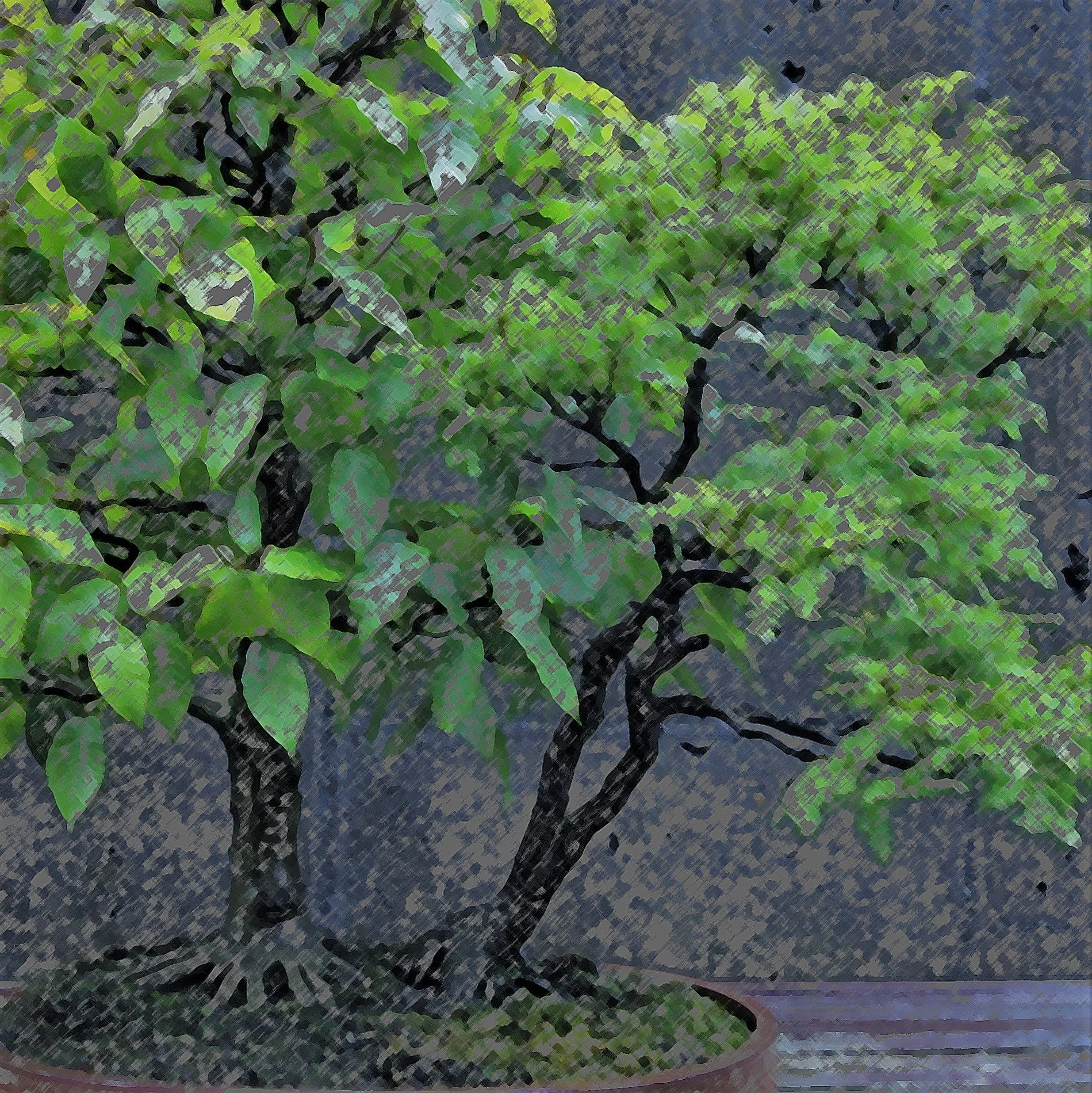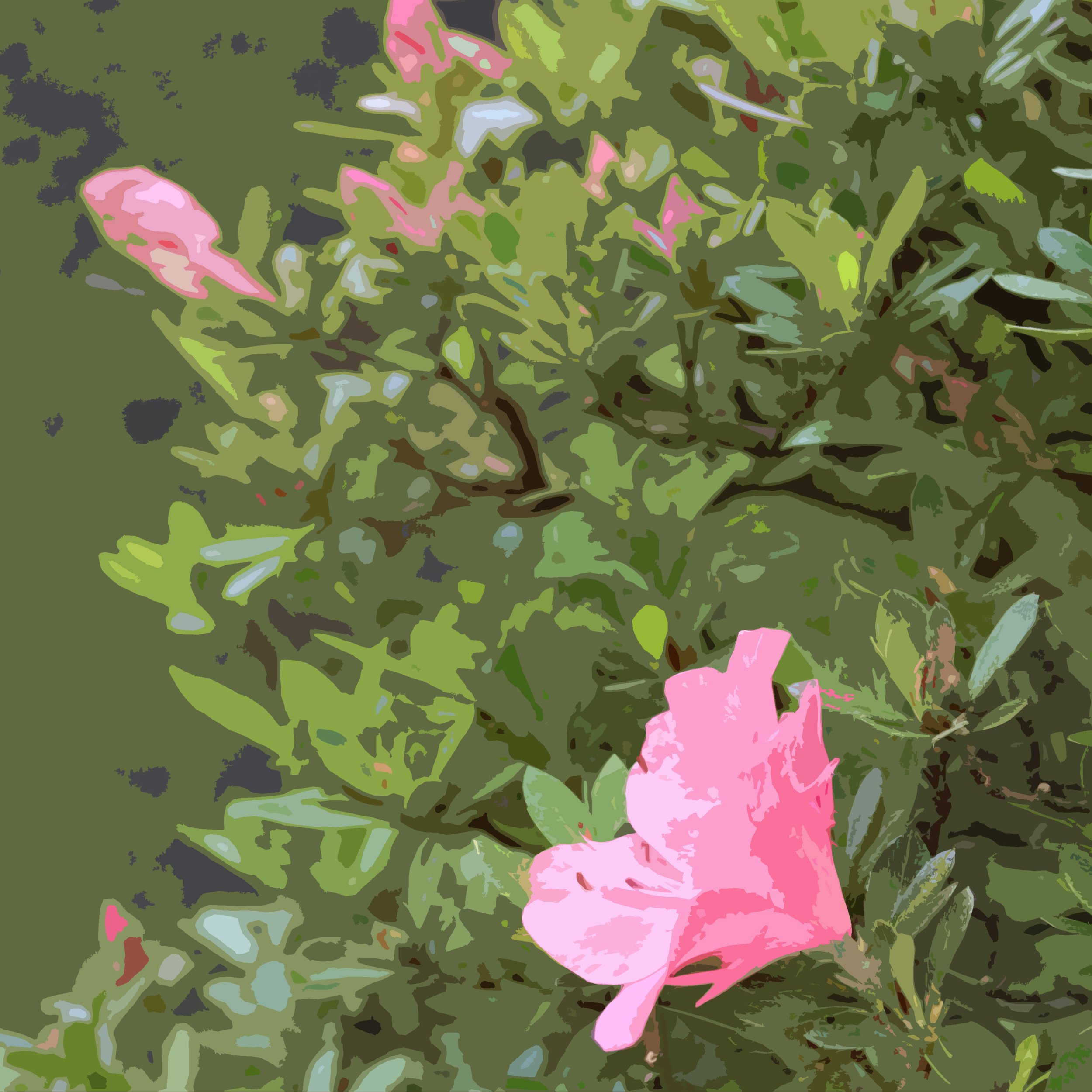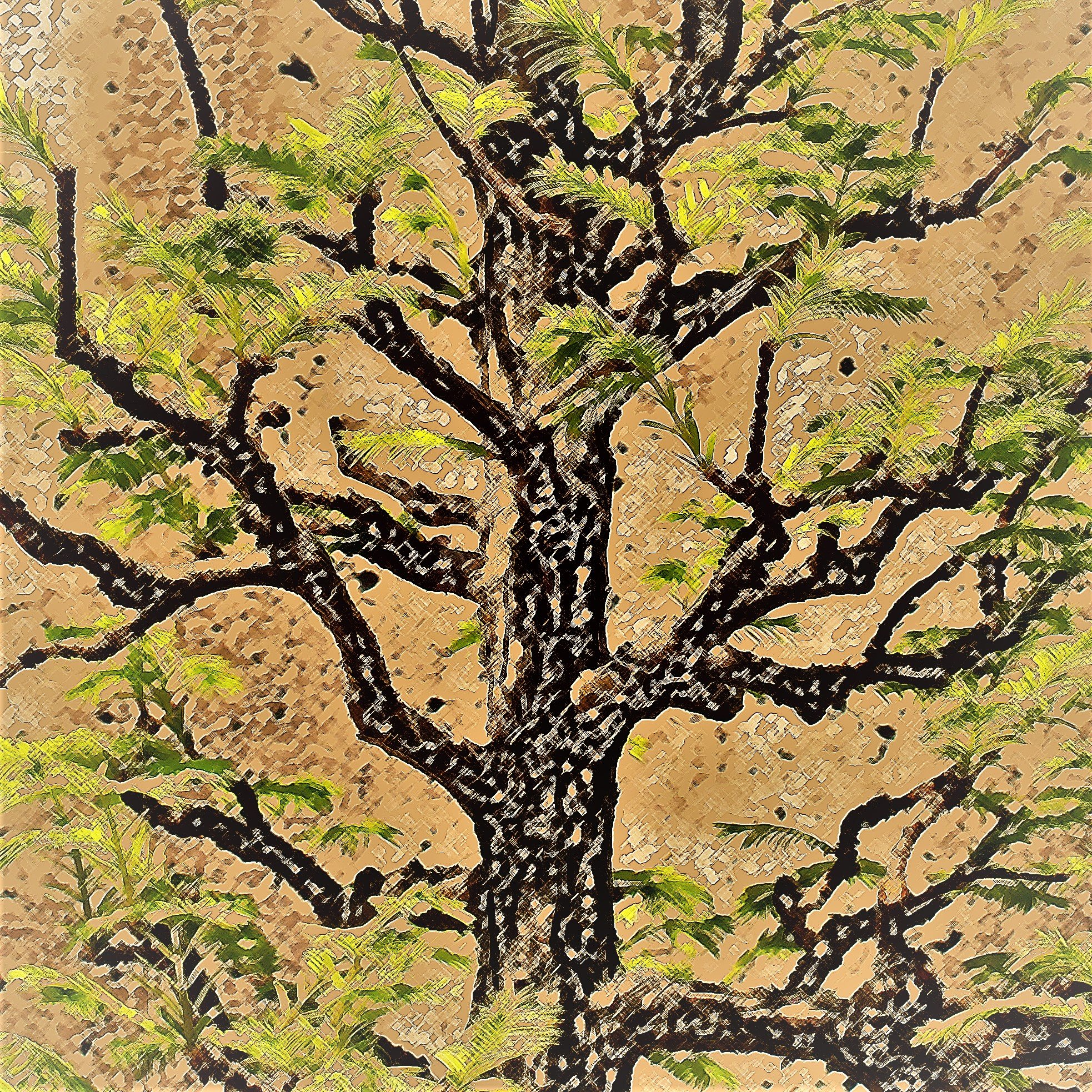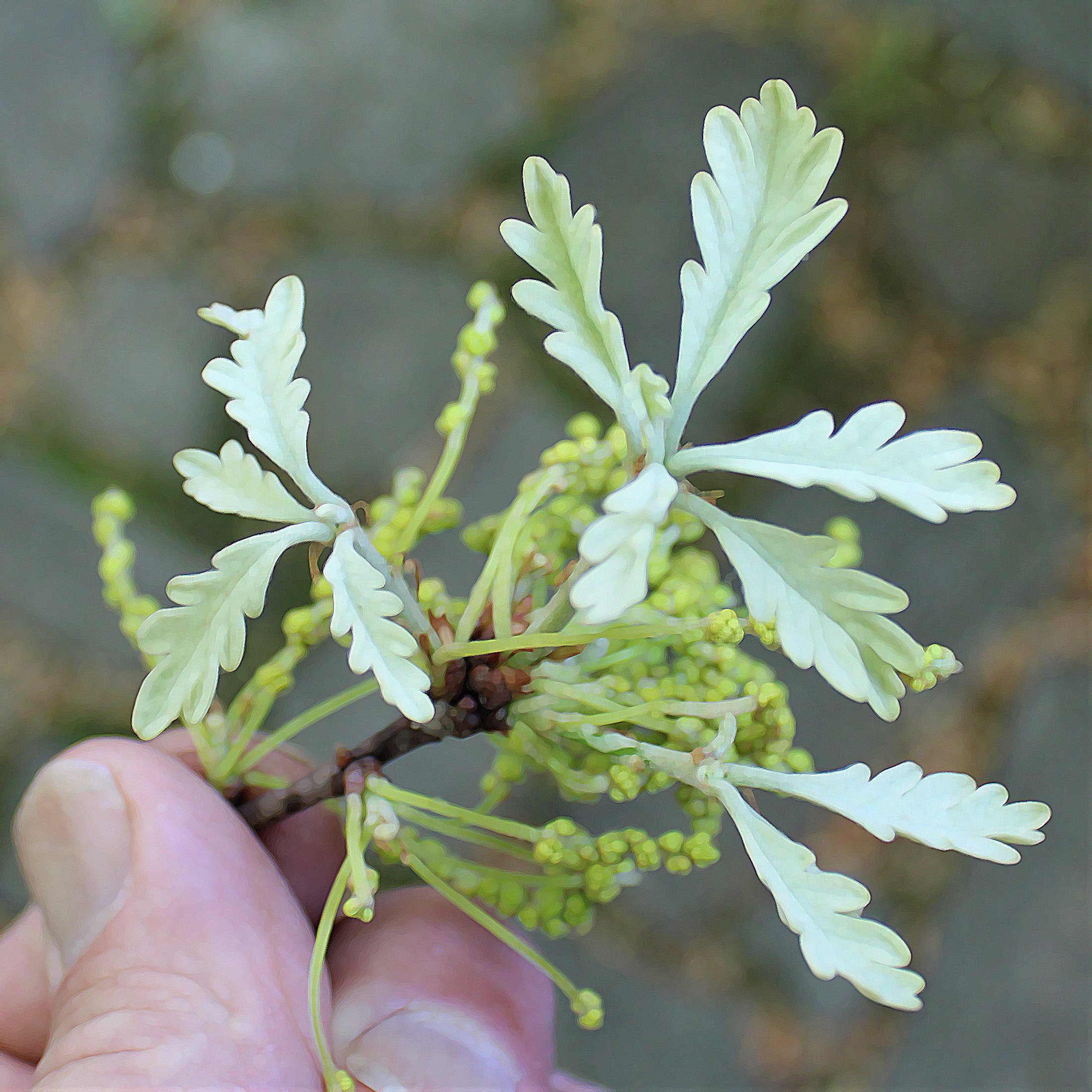No bonsai is created in a day. This particular maple has been years in the making and the session it goes through today is just another step along a path, another increment working off the increments that preceded it and setting up the increments that will follow.
Read MoreThere was a big pot made of redwood, the kind you might use for growing a tree out on a patio, and jutting up out of the soil in the pot was a piece of wood like an upside-down baseball bat. Mr. Staples came along so I asked him if the trunk in a pot was supposed to go with us. “Yeah,” he said, “That goes.” I bent to pick it up. “Be careful with that,” he said, “I paid five hundred dollars for that stick!”
Read MoreIn bonsai, American hornbeam is more commonly used than hop-hornbeam. The reason for this is somewhat mysterious, given both species work equally well for the purpose. This disparity is reflected in the Arboretum's bonsai collection, where we have numerous American hornbeam specimens but only one hop-hornbeam. The one hop-hornbeam specimen we have is substantial, however, and we've had it for a long time.
Read MoreMost tray landscapes depict generic scenes from nature, but the possibility exists to have them represent more specific, real-life places. The challenge in doing this is finding a key feature of a given place that can be worked into the design of a tray landscape, suggesting the identity of the place being represented.
Read MoreA person ought not walk on ice. Ice is slippery and hard, and although you might move across it carefully, thinking you are doing okay, suddenly your feet are flying out in front of you and gravity yanks you down from behind. When you hit the hard ice you get hurt. Best altogether to avoid walking on the stuff, if it is avoidable.
Read MoreHe didn't crack this like an obvious joke. He said it straight faced and then went about his business. This was one of several instances during the program where Mr. Yoshimura projected what I took to be an iconoclastic tendency. He was conservative in his appearance, precise and formal in manner, but seemed rebellious in his attitude. At the conclusion of the program I turned to Janet and said, "What a dangerous old man!"
Read MoreDon was formulating a plan to have me further my education by studying with a well-known bonsai professional who was a friend and associate of his. When my horticultural mentor Dr. Creech caught wind of this he immediately stepped in and made arrangements for me to go to Washington DC to study with bonsai curator Bob Drechsler. Dr. Creech was insistent that this be done and he pulled all the strings to make it happen.
Read MoreEven after removing the dead beech tree, I did not do much with the hemlock for a while. I spent the time taking care of other plants while keeping an eye on what remained of Mr. Yoshimura's tree and thinking about what to do next. I had always seen those trees as being subsidiary to some larger element: first the original primary trunk of the hemlock and later the American beech that replaced it. Now it was time to evaluate them on their own.
Read MoreIn the four years since the demonstration that brought them together, the beech and hemlock did well and both attained an agreeable degree of ramification in their branching. It is worth pointing out that even if a person is persnickety about larger sized leaves on deciduous bonsai trees, half the year there is no problem at all. American beech has distinctive leaf buds, too, so the winter look of this planting was particularly pleasing to me.
Read MoreFaith is required, along with a bit of imagination, to see past the moment and focus on an outcome that is perhaps years away. That visionary aspect of bonsai design was another of Mr. Yoshimura's strengths. I should add that my decision to take a chance and try for something different, to be creative and innovative in my thinking, was also a product of Mr. Yoshimura's influence. Those were traits he stressed to me when I studied with him. I was paying attention.
Read MoreEven without the little trees, the jewels at the heart of the garden’s identity, the place enchants. People slow down as they walk through, they speak more softly and look more carefully. The bonsai garden is not large but there is much to see in the layers of detail contained within. The second stage of spring in the bonsai garden begins on the second Saturday in May — World Bonsai Day — when the bonsai are returned to their benches and the garden is made whole.
Read MoreThe drive between Butner and Asheville took nearly five hours each way and the two journeys there and back were done as day trips, only a few days apart. We really had to pack the trucks to make everything fit in two trips, but amazingly we hauled everything without doing any damage. I had plenty of time on the long drive to think about how these desperate little trees would impact my life, but honestly, I don't remember what went through my mind.
Read MoreWhatever their appearance and however they may be judged aesthetically, bonsai of this sort have the essence of some greater identity due to particular circumstances. This something extra may be a remarkable story involving the individual bonsai itself, or, as is the case with our dawn redwood (Metasequoia glyptostroboides), the added interest may pertain to the species of plant from which the bonsai is made.
Read MoreThis homegrown bonsai specimen stands out in autumn with foliage the color of a fire truck, a feature attributable to the tree's genetic inheritance as a red maple. It is large, standing just under thirty-inches in height, with a diameter of eight-inches just above the surface roots. That is big for a bonsai but small for a mature red maple, a consequence of the environmental impact of being cultivated as a bonsai.
Read MoreIn the case of this dwarf white pine, I decided it was not worth undoing what had been accomplished because I could not think of a better tree to make out of what already existed. If this bonsai were a maple or hornbeam, it could be pruned back hard to nothing much more than a trunk and a new design could be constructed from the resulting regrowth. Pines are different.
Read MoreWhen the Arboretum accepted the unsolicited donation of a bonsai collection and I was offered the job of caring for the little trees, I tried to turn down the assignment. I was happy doing what I was doing at the time, which was most often manual labor out on the Arboretum property. We were outside most of the time, working on our own with more than four hundred wooded acres to keep us busy, and we rarely saw anyone else all day.
Read MoreWhat do you want to be when you grow up? That is a standard question older people feel obliged to ask the young, or so it was when I was younger and I suspect the question is still out there. The older person who asks the question is only making conversation, trying to find out a little bit about you and what you are interested in.
Read MoreThe American hornbeam had previously been part of a different Arboretum landscape planting, but was removed because it had a more noticeably crooked trunk than the other trees with which it had been planted. The rejected hornbeam was in a storage area for several years when I noticed it and asked about its availability. The same crooked trunk that was previously seen as a flaw made the tree attractive for its new assignment.
Read MoreThe Curator’s Journal began publishing the last Friday in March, 2022. That means this week's entry brings us around full circle and we now officially close out the first year of the course. Here at the juncture where one year ends and another is about to begin, it seems opportune to pause a moment and take in the scenery, looking back at where we've been and surveying what might be ahead.
Read MoreThe idea of identifying what is most appealing about a tree and making that feature more prominent through presentation is elemental to good bonsai design. Other teachers have taught this, but I learned it that day from Mr. Yoshimura, on this juniper specimen.
Read More


















